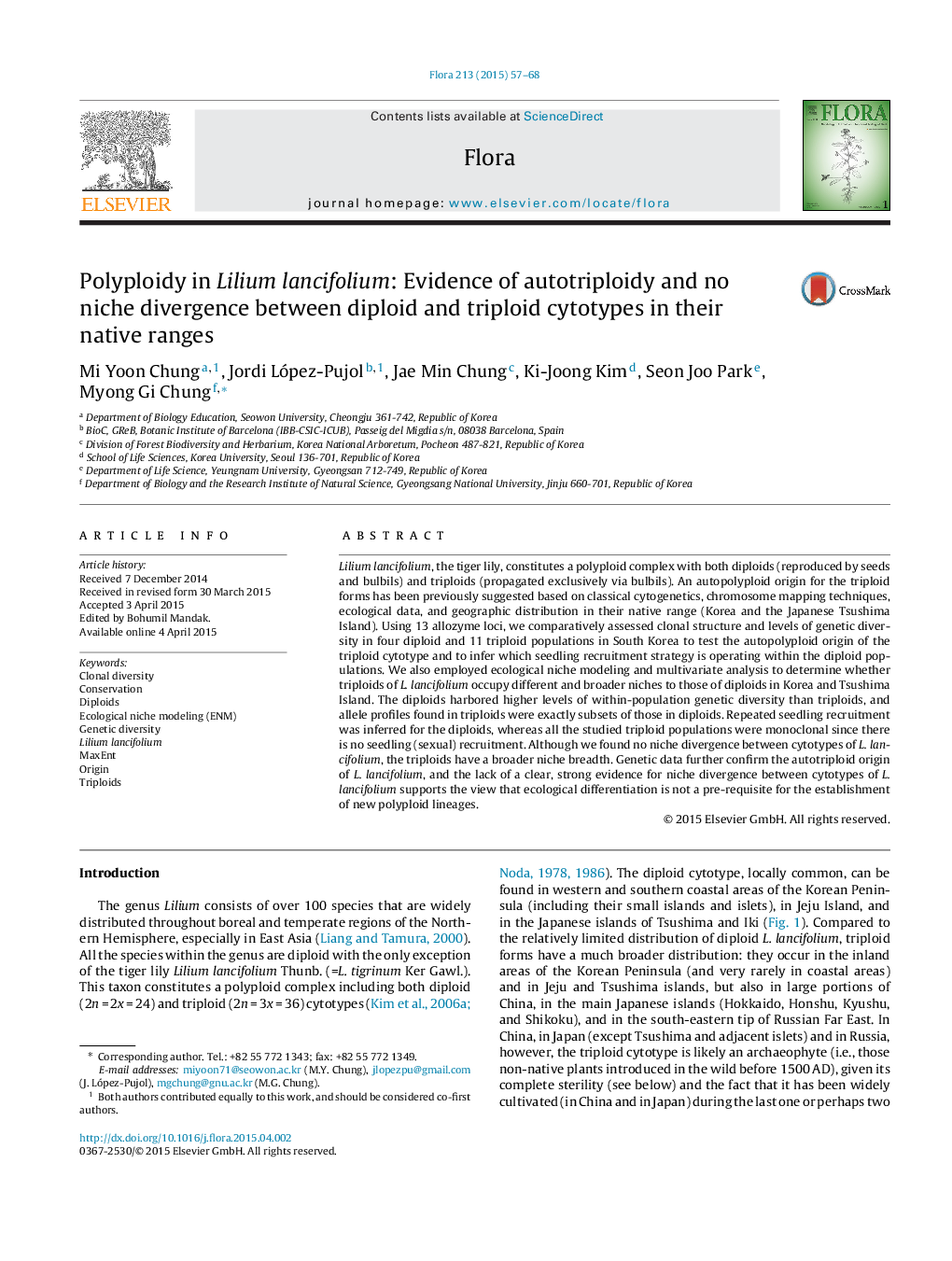| کد مقاله | کد نشریه | سال انتشار | مقاله انگلیسی | نسخه تمام متن |
|---|---|---|---|---|
| 2179386 | 1549946 | 2015 | 12 صفحه PDF | دانلود رایگان |

• Allozymes clearly indicate an autopolyploid origin for the triploid cytotype of Lilium lancifolium.
• Ecological niche modeling suggests no niche divergence between diploid and triploids.
• The triploid cytotype of L. lancifolium has a broader niche breadth.
• Ecological differentiation is not a pre-requisite for new polyploid lineage establishment.
Lilium lancifolium, the tiger lily, constitutes a polyploid complex with both diploids (reproduced by seeds and bulbils) and triploids (propagated exclusively via bulbils). An autopolyploid origin for the triploid forms has been previously suggested based on classical cytogenetics, chromosome mapping techniques, ecological data, and geographic distribution in their native range (Korea and the Japanese Tsushima Island). Using 13 allozyme loci, we comparatively assessed clonal structure and levels of genetic diversity in four diploid and 11 triploid populations in South Korea to test the autopolyploid origin of the triploid cytotype and to infer which seedling recruitment strategy is operating within the diploid populations. We also employed ecological niche modeling and multivariate analysis to determine whether triploids of L. lancifolium occupy different and broader niches to those of diploids in Korea and Tsushima Island. The diploids harbored higher levels of within-population genetic diversity than triploids, and allele profiles found in triploids were exactly subsets of those in diploids. Repeated seedling recruitment was inferred for the diploids, whereas all the studied triploid populations were monoclonal since there is no seedling (sexual) recruitment. Although we found no niche divergence between cytotypes of L. lancifolium, the triploids have a broader niche breadth. Genetic data further confirm the autotriploid origin of L. lancifolium, and the lack of a clear, strong evidence for niche divergence between cytotypes of L. lancifolium supports the view that ecological differentiation is not a pre-requisite for the establishment of new polyploid lineages.
Journal: Flora - Morphology, Distribution, Functional Ecology of Plants - Volume 213, May 2015, Pages 57–68